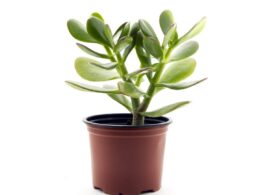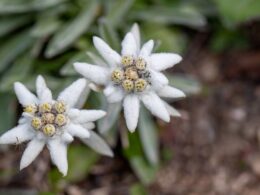What is a Citronella Plant?
The citronella plant is a perennial herb that belongs to the Rutaceae family. It is native to Sri Lanka and India, but can now be found in other tropical regions of the world. The plant gets its name from its lemon-scented leaves, which are used to make citronella oil. This oil is commonly used in candles and mosquito repellents.
The citronella plant grows up to six feet tall and has lance-shaped leaves that are green on top and silver underneath. The plant produces white or yellow flowers that clustered together in inflorescences. Citronella plants can be propagated by seed, but they are more commonly propagated by rooting stem cuttings.
Does Citronella Repel Mosquitoes?
The citronella plant is a popular choice for mosquito control, and with good reason. The plant is native to Asia, where it has long been used as a natural mosquito repellent (especially citronella grass oil). The oil extracted from the plant’s leaves has been shown to be effective at repelling mosquitoes, and citronella candles are a common sight in many homes during the summer months. If you want to drive those skeeters away, try rubbing or breaking the citronella leaves.
Mixed Results
However, some experts have cast doubt on the efficacy of citronella plants, arguing that they only provide limited protection. In recent years, scientific studies have provided mixed results, with some finding that citronella plants can help to reduce mosquito bites, and others finding no significant difference. Ultimately, the effectiveness of citronella plants appears to depend on a variety of factors, including the citronella species, the plant’s age, and the environment in which it is grown. Now, let’s look at some citronella plant care tips.
Temperature Requirements
Citronella plants are actually quite sensitive to temperature changes. In their native tropical habitat, they typically experience little variation in temperature, remaining warm and humid year-round. However, when they are grown in colder climates, they can struggle to adapt.
Citronella will generally begin to experience stress when the temperature drops below 50 degrees Fahrenheit. At this point, the leaves will start to turn brown and drop off. The plant may also stop producing new growth. If the temperature continues to decline, the plant may eventually die.
Citronella Plant Care: Watering
In order to maintain optimal growth, these plants need to be watered frequently, i.e., once per day during the growing season. Citronella plant care experts state that mosquito plants do not like to sit in wet soil, so be sure the drainage is good and that the pot has holes in the bottom. These easy-to-grow plants are often used as mosquito repellents, so keep them away from areas where you want to attract pollinators such as bees and butterflies.
Propagating Citronella Plants
If you live in an area with a lot of mosquitoes, you may want to consider propagating the mosquito plant in your own yard. Here are some tips on how to do it:
- You can get a healthy mother plant cutting from a friend or neighbor, or you can purchase one from a nursery.
- Fill a planting container with well-draining soil. Make sure the pot has holes in the bottom to allow for drainage.
- Water the soil thoroughly and then take a cutting from the mother plant. The cutting should be about four inches long and include several leaves.
- Remove the lower leaves from the cutting and dip the end in rooting hormone powder.
- Plant the cutting in the prepared pot and cover it with plastic wrap or a clear lid. This will help to create a humid environment.
Placement
Place the pot in a warm, sunny location (full sun is fine), and keep the soil moist. Avoid frost at all times. The cutting should root within four to six weeks. Once the citronella plant has rooted, you can remove the plastic wrap. Be sure to water it regularly and fertilize it during the growing season.
Potting and Repotting Citronella
Citronella can eventually outgrow its pot, so regular repotting is an important part of citronella plant care. When repotting citronella, choose a pot that is only one or two sizes larger than the current pot. Make sure the new pot has drainage holes in the bottom.
Water the citronella plant well, and then allow it to drain before repotting. Gently remove the plant from its current pot and place it in the new pot. Fill in around the citronella with fresh potting mix and water thoroughly. Be sure to keep the soil moist, but not soggy, until the plant is established in its new pot.
Citronella Geranium Toxicity
While citronella plants are generally considered safe for humans, pets may have a different reaction. Some pets, such as dogs and cats, may experience gastrointestinal upset if they ingest the plant. Additionally, the oils in the plant can cause skin irritation in some animals. If you have a pet that is prone to chewing on plants, it is best to keep them away from citronella plants. However, if your pet does come into contact with the plant, they should be monitored for signs of irritation or distress. If you have any concerns, please consult with your veterinarian.
Quick Summary to Growing Citronella Scented Geranium
Citronella is best known for its use in mosquito repellents, but this versatile plant can also be used in a variety of other ways. It’s a tropical plant, so it thrives in warm, moist conditions. It can be grown indoors or out, but it will need many hours of sunlight to prosper. When planting, make sure to space the plants at least two feet apart to allow room for growth. Citronella can be propagated by seed, division, or cuttings.
Once established, citronella is relatively low-maintenance and will not require much fertilizer or water. However, it is important to keep an eye out for pests, as citronella is susceptible to mealybugs and spider mites. With some attentive citronella plant care, your mosquito beauty will grow well and bring you happiness!



















